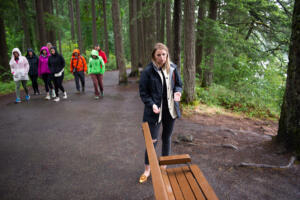Those who support and those who oppose the Bonneville Power Administration’s I-5 Corridor Reinforcement Project have a little longer than expected to submit their comments.
In consideration of requests from the public, the Bonneville Power Administration extended the comment deadline from March 1 to noon Monday, March 25.
BPA released the draft environmental impact statement and preferred route alternative for the 500 kilovolt lattice steel tower transmission line for public review and comment on Nov. 13.
The draft EIS describes the proposed project and why it is needed, discusses the environmental impacts the project would create, and lists mitigation measures that would lessen or eliminate those impacts.
BPA’s preferred alternative is the “Central Alternative,” using “Central Option 1.”
According to a BPA press release, the current cost estimate for the preferred alternative is $459 million and avoids many small, rural parcels of private land by crossing significant lengths of land held by large public and private landowners, as well as avoiding the most environmentally, mission-sensitive and high impact lands these entities manage on the East Alternative.




